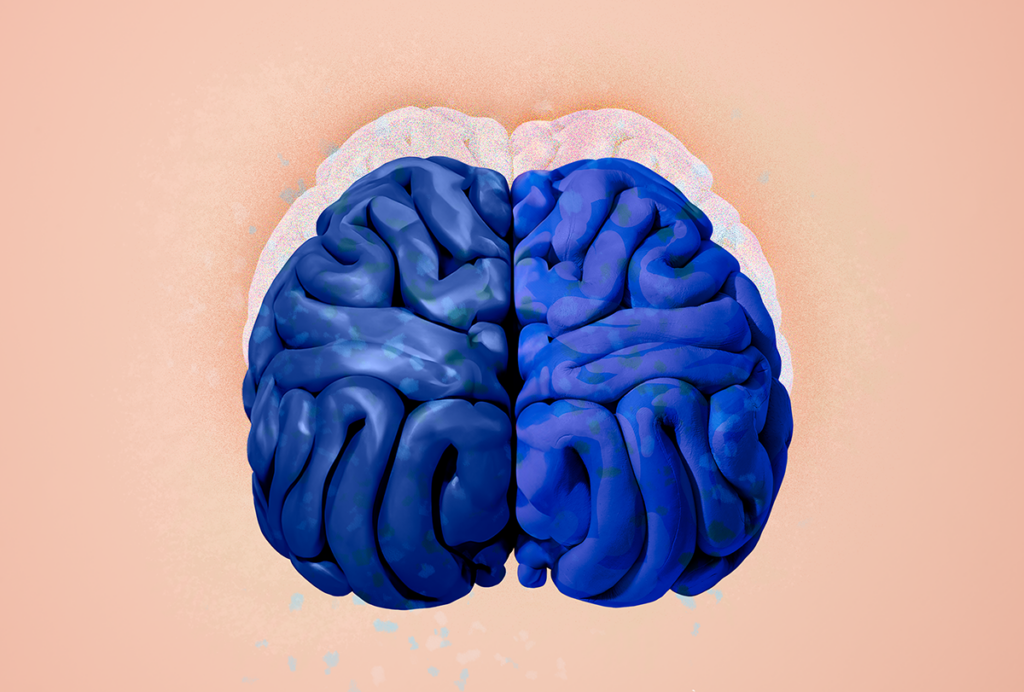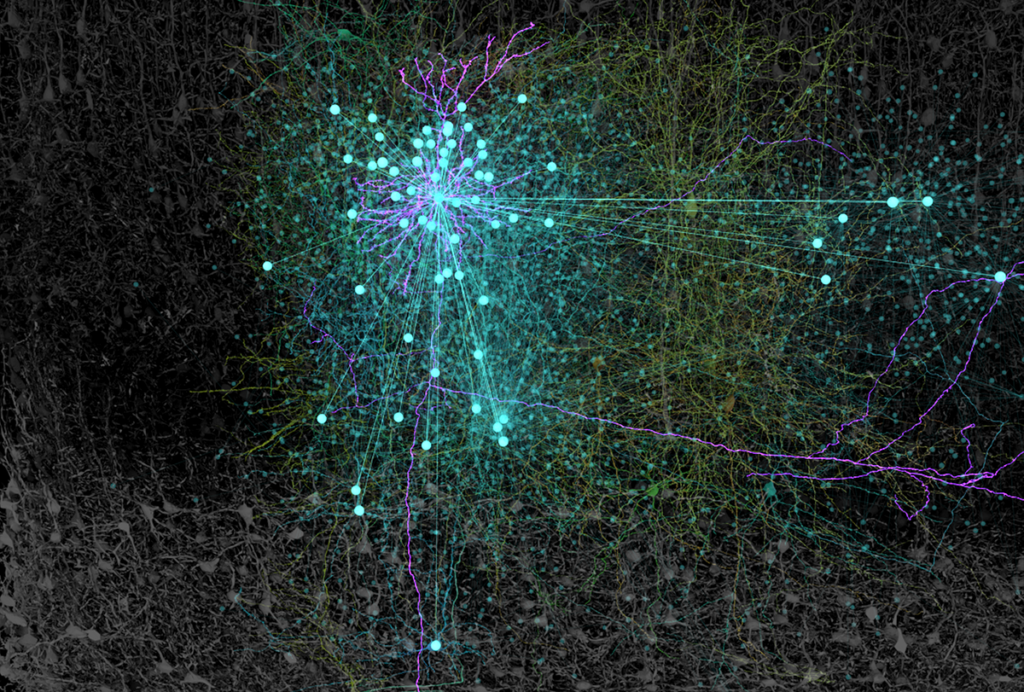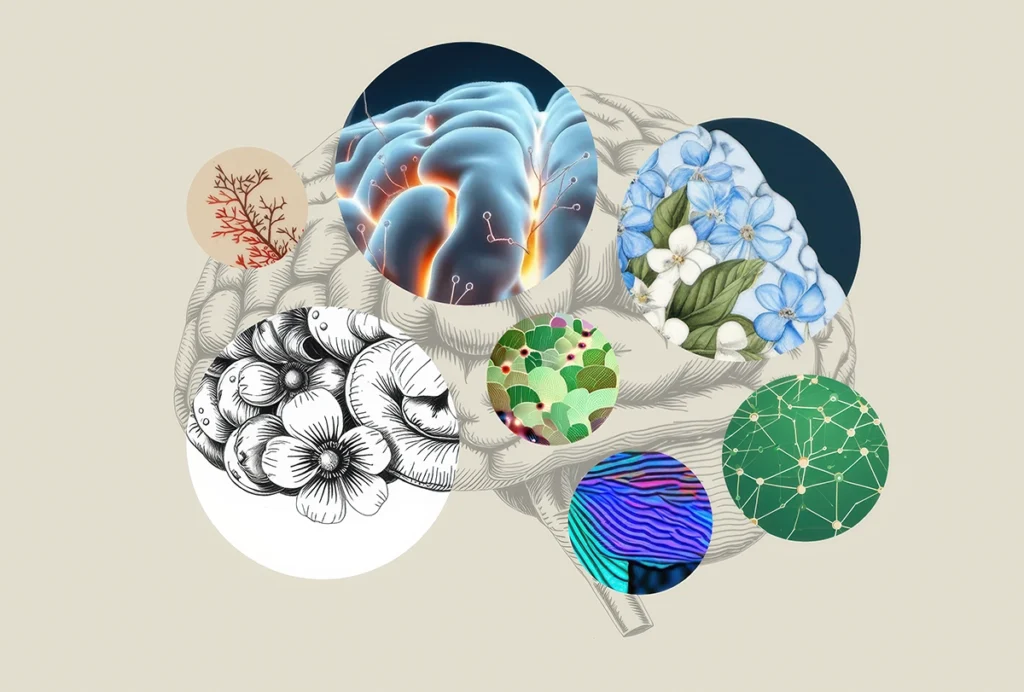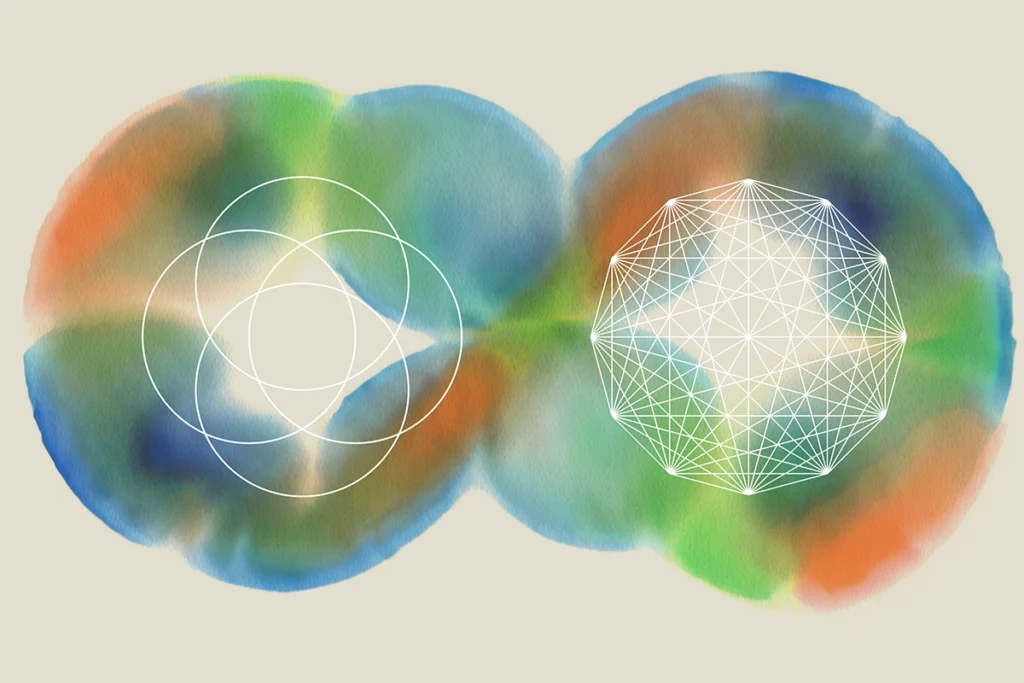Machine learning
Recent articles
Inhibitory cells work in concert to orchestrate neuronal activity in mouse brain
A cubic millimeter of brain tissue, meticulously sectioned, stained and scrutinized over the past seven years, reveals in stunning detail the role of inhibitory interneurons in brain structure and function.

Inhibitory cells work in concert to orchestrate neuronal activity in mouse brain
A cubic millimeter of brain tissue, meticulously sectioned, stained and scrutinized over the past seven years, reveals in stunning detail the role of inhibitory interneurons in brain structure and function.
Does the solution to building safe artificial intelligence lie in the brain?
Now is the time to decipher what makes the brain both flexible and dependable—and to apply those lessons to AI—before an unaligned agentic system wreaks havoc.

Does the solution to building safe artificial intelligence lie in the brain?
Now is the time to decipher what makes the brain both flexible and dependable—and to apply those lessons to AI—before an unaligned agentic system wreaks havoc.
‘Digital humans’ in a virtual world
By combining large language models with modular cognitive control architecture, Robert Yang and his collaborators have built agents that are capable of grounded reasoning at a linguistic level. Striking collective behaviors have emerged.
‘Digital humans’ in a virtual world
By combining large language models with modular cognitive control architecture, Robert Yang and his collaborators have built agents that are capable of grounded reasoning at a linguistic level. Striking collective behaviors have emerged.
The brain holds no exclusive rights on how to create intelligence
Many of the recent developments underlying the explosive success of artificial intelligence have diverged from using neuroscience as a source of inspiration—and the trend is likely to continue.

The brain holds no exclusive rights on how to create intelligence
Many of the recent developments underlying the explosive success of artificial intelligence have diverged from using neuroscience as a source of inspiration—and the trend is likely to continue.
What are recurrent networks doing in the brain?
The cortex is filled with excitatory local synapses, but we know little about their role in brain function. New experimental tools, along with ideas from artificial intelligence, are poised to change that.

What are recurrent networks doing in the brain?
The cortex is filled with excitatory local synapses, but we know little about their role in brain function. New experimental tools, along with ideas from artificial intelligence, are poised to change that.
Grace Hwang and Joe Monaco discuss the future of NeuroAI
Hwang and Monaco organized a recent workshop to hear from leaders in the field about how best to integrate NeuroAI research into the BRAIN Initiative.
Grace Hwang and Joe Monaco discuss the future of NeuroAI
Hwang and Monaco organized a recent workshop to hear from leaders in the field about how best to integrate NeuroAI research into the BRAIN Initiative.
NeuroAI: A field born from the symbiosis between neuroscience, AI
As the history of this nascent discipline reveals, neuroscience has inspired advances in artificial intelligence, and AI has provided a testing ground for models in neuroscience, accelerating progress in both fields.

NeuroAI: A field born from the symbiosis between neuroscience, AI
As the history of this nascent discipline reveals, neuroscience has inspired advances in artificial intelligence, and AI has provided a testing ground for models in neuroscience, accelerating progress in both fields.
What the brain can teach artificial neural networks
The brain offers valuable lessons to artificial neural networks to boost their data and energy efficiency, flexibility and more.

What the brain can teach artificial neural networks
The brain offers valuable lessons to artificial neural networks to boost their data and energy efficiency, flexibility and more.
Karen Adolph explains how we develop our ability to move through the world
How do babies' bodies and their environment teach them to move—and how can robots benefit from these insights?
Karen Adolph explains how we develop our ability to move through the world
How do babies' bodies and their environment teach them to move—and how can robots benefit from these insights?
Kim Stachenfeld on the dance between neuroscience and artificial intelligence
As a researcher at both Google DeepMind and Columbia University, Stachenfeld offers cross-disciplinary insight into how to understand the brain.
Kim Stachenfeld on the dance between neuroscience and artificial intelligence
As a researcher at both Google DeepMind and Columbia University, Stachenfeld offers cross-disciplinary insight into how to understand the brain.
Explore more from The Transmitter
Smell studies often use unnaturally high odor concentrations, analysis reveals
It’s time to fashion olfactory neuroscience stimuli based on odor concentrations in the wild, say study investigators Elizabeth Hong and Matt Wachowiak.

Smell studies often use unnaturally high odor concentrations, analysis reveals
It’s time to fashion olfactory neuroscience stimuli based on odor concentrations in the wild, say study investigators Elizabeth Hong and Matt Wachowiak.
Developmental delay patterns differ with diagnosis; and more
Here is a roundup of autism-related news and research spotted around the web for the week of 14 April.

Developmental delay patterns differ with diagnosis; and more
Here is a roundup of autism-related news and research spotted around the web for the week of 14 April.
‘Natural Neuroscience: Toward a Systems Neuroscience of Natural Behaviors,’ an excerpt
In his new book, published today, Nachum Ulanovsky calls on the field to embrace naturalistic conditions and move away from overcontrolled experiments.

‘Natural Neuroscience: Toward a Systems Neuroscience of Natural Behaviors,’ an excerpt
In his new book, published today, Nachum Ulanovsky calls on the field to embrace naturalistic conditions and move away from overcontrolled experiments.